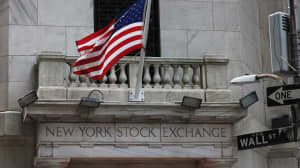Bond yields rose on Monday as traders eyed a week busy with U.S. jobs-related data.
What’s happening
-
The yield on the 2-year Treasury
TMUBMUSD02Y,
4.891% added 1.7 basis points to 4.895%. Yields move in the opposite direction to prices. -
The yield on the 10-year Treasury
TMUBMUSD10Y,
3.978% rose 3.6 basis points to 3.990%. -
The yield on the 30-year Treasury
TMUBMUSD30Y,
4.030% climbed 2.2 basis points to 4.034%.
What’s driving markets
Developed economies’ sovereign bond yields were mostly higher amid hopes Beijing will act to stimulate the world’s second biggest economy.
A report released Monday showed activity in China’s manufacturing sector shrank for a fourth consecutive month in July. But the news only served to reinforce the belief that the government would go through with a raft of proposals revealed the same day designed to boost demand.
Also underpinning yields — with German 10-year bunds
TMBMKDE-10Y,
U.S. economic updates set for release on Monday include the Chicago business barometer for July, released at 8:30 a.m., and the Fed senior loan officer survey, or SLOOS, for the second quarter, due at 2 p.m. Both times Eastern.
After Friday’s data that showed easing inflationary pressures in the U.S., the main focus this week is likely to be the nonfarm payrolls report on Friday, news that will contribute to the Federal Reserve’s assessment of whether to continue tightening monetary policy.
Markets are pricing in an 80% probability that the Fed will leave interest rates unchanged at a range of 5.25% to 5.50% after its next meeting on September 20, according to the CME FedWatch tool.
The chances of a 25 basis point rate hike to a range of 5.50 to 5.75% at the subsequent meeting in November is priced at 29%.
The central bank is not expected to take its Fed funds rate target back down to around 5% until June 2024, according to 30-day Fed Funds futures.
What are analysts saying
“Given that the outcome of the September FOMC (19th-20th) will likely depend on the two CPIs and two payroll reports prior to the meeting, all roads this week lead to U.S. payrolls on Friday,” said Jim Reid, strategist at Deutsche Bank.
“Ahead of that tomorrow JOLTs data will give clues as to the current tightness of the labour market underneath the headline numbers. For those of us who still believe old fashioned metrics of the cycle matter, then the quarterly Fed SLOOS later today could actually be the most informative for where the economy might be in 6-12 months. We also have the manufacturing (tomorrow) and services (Thursday) ISMs as a timely indicator of the momentum in the US economy,” Reid added.






